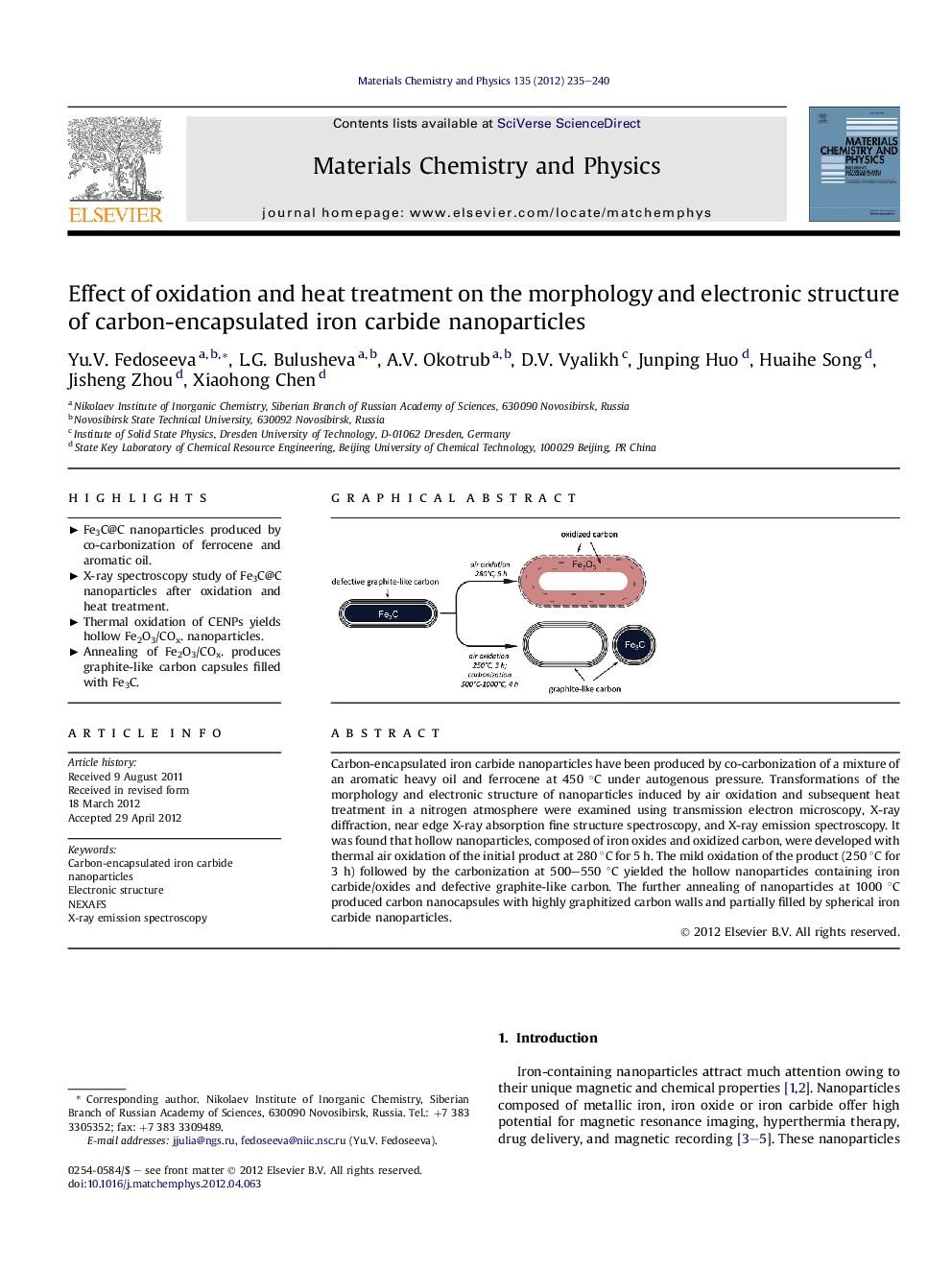| Article ID | Journal | Published Year | Pages | File Type |
|---|---|---|---|---|
| 1523436 | Materials Chemistry and Physics | 2012 | 6 Pages |
Carbon-encapsulated iron carbide nanoparticles have been produced by co-carbonization of a mixture of an aromatic heavy oil and ferrocene at 450 °C under autogenous pressure. Transformations of the morphology and electronic structure of nanoparticles induced by air oxidation and subsequent heat treatment in a nitrogen atmosphere were examined using transmission electron microscopy, X-ray diffraction, near edge X-ray absorption fine structure spectroscopy, and X-ray emission spectroscopy. It was found that hollow nanoparticles, composed of iron oxides and oxidized carbon, were developed with thermal air oxidation of the initial product at 280 °C for 5 h. The mild oxidation of the product (250 °C for 3 h) followed by the carbonization at 500–550 °C yielded the hollow nanoparticles containing iron carbide/oxides and defective graphite-like carbon. The further annealing of nanoparticles at 1000 °C produced carbon nanocapsules with highly graphitized carbon walls and partially filled by spherical iron carbide nanoparticles.
Graphical abstractFigure optionsDownload full-size imageDownload as PowerPoint slideHighlights► Fe3C@C nanoparticles produced by co-carbonization of ferrocene and aromatic oil. ► X-ray spectroscopy study of Fe3C@C nanoparticles after oxidation and heat treatment. ► Thermal oxidation of CENPs yields hollow Fe2O3/COx. nanoparticles. ► Annealing of Fe2O3/COx. produces graphite-like carbon capsules filled with Fe3C.
